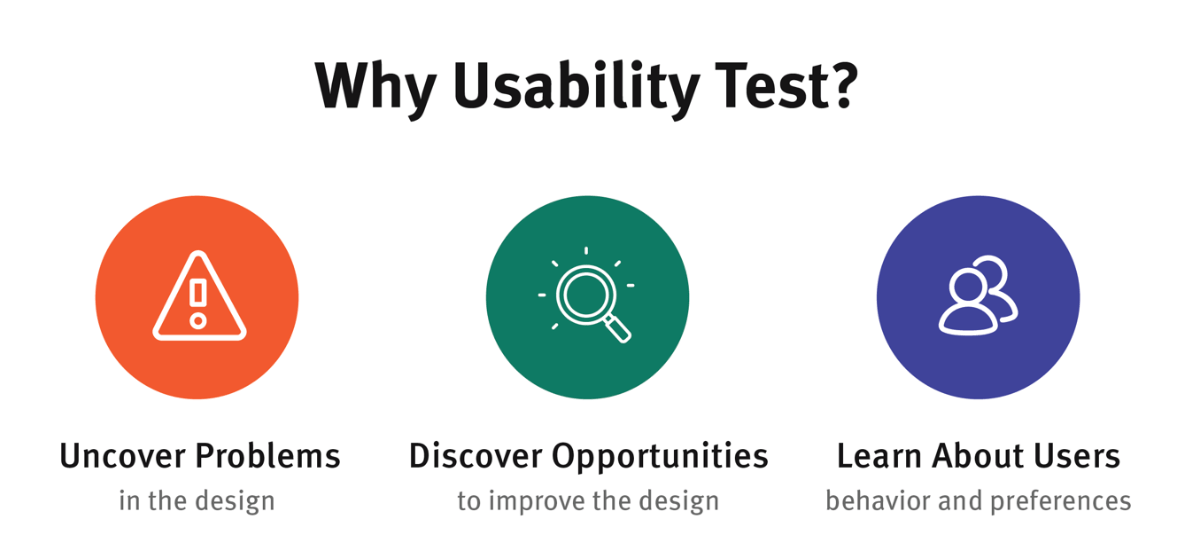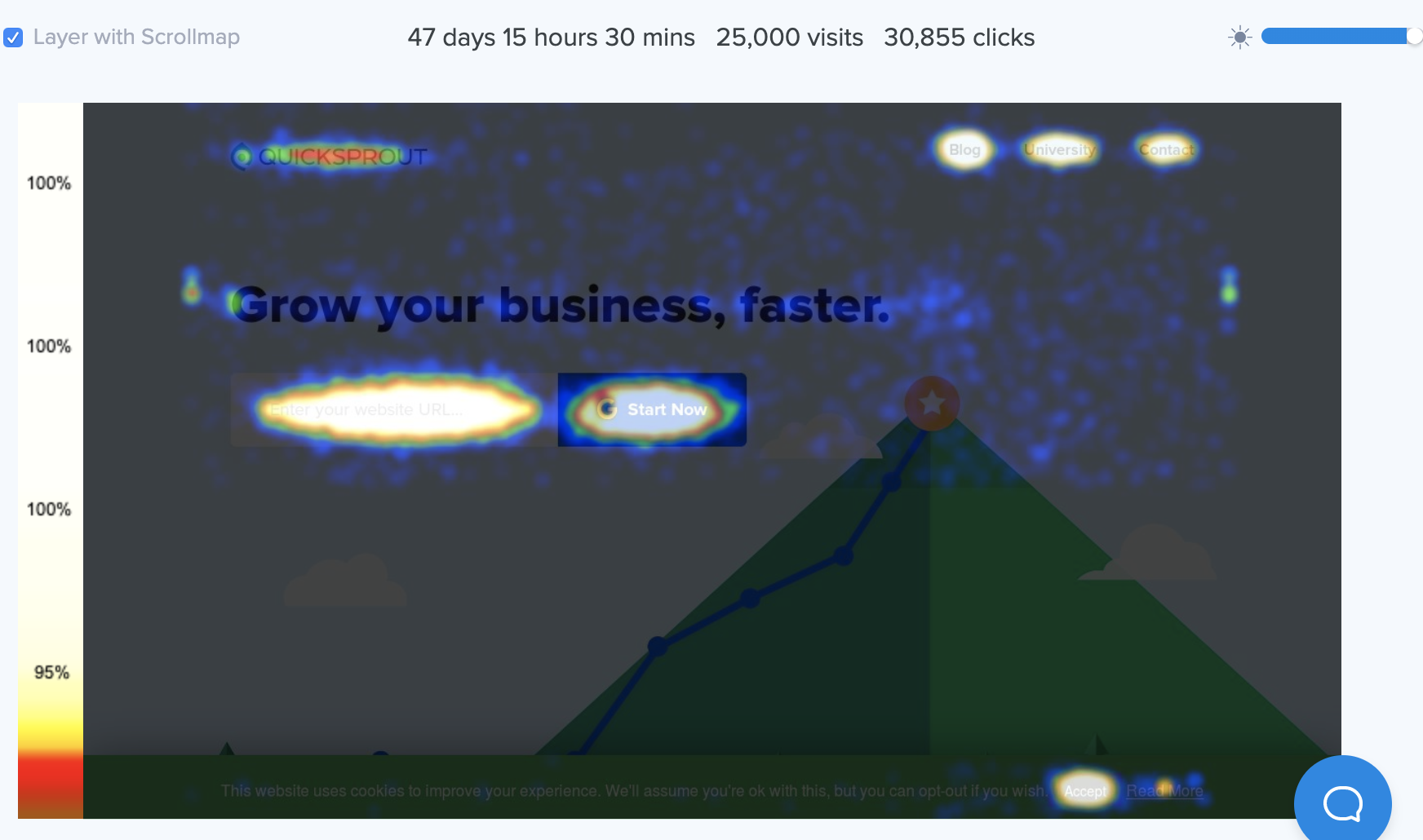In April of 1969, work began on what would one day be the internet. Back then, it was known as ARPAnet, and it existed for the scientists of the US Government’s Advanced Research Projects Agency. They planned to share scientific papers, commentary, and ideas, across an internet that looked like this:

A map of the ENTIRE internet circa 1977.
Yep, that’s the whole thing.
Fast forward to now, and the internet is everywhere and everything. It’s hard to imagine life without it, even if you actually remember life without it. It’s easy to feel that the web we know was created by visionaries who saw the big picture.
In fact, some of the most important parts of the web essentially just happened. Others were created to solve immediate problems, using the tools at hand.
The road to post-Owl Google from the World Wide Web project isn’t straight. But it does have some fascinating insights into how our online world took on its present shape. And if you’ve ever measured visitor behavior, optimized a website, worked with a team, created content or sent a marketing email, a lot of it looks eerily familiar.
1. Hyperlinks
Hyperlinks are blue for two reasons, depending on who you believe.
Some people will point you to the earliest web browsers, like Mosaic for Windows:

Source
Blue looks like a default choice. The background is already gray, the text is already black, and light colors don’t show up well on a black/white color scheme. So the options were red, blue and green.
That’s where the theorizing starts.
Red and green are detected by the same cells in the eye, and one of the most common forms of colorblindness is red-green colorblindness. It affects 7% of men and only 0.4% of women, but that’s still one person in 25 overall. So it made sense to choose a color that everyone could see and not mistake for black.
As Joe Clarke explains, in his book Building Accessible Websites (2002):
Red and green are the colors most affected by color-vision deficiency. Almost no one has a blue deficiency. Accordingly, nearly everyone can see blue, or, more accurately, almost everyone can distinguish blue as a color different from others.
That would make sense: and it is the reason other parts of the web are blue – like Facebook, which is blue because Mark Zuckerberg is red-green colorblind.
So there was a meeting where all the DARPAnet people and the early net pioneers all sat around a table and talked about which color to make links, and they decided on blue because of accessibility issues?
If only.
That’s not the way Tim Berners-Lee remembers it.
More than any single person, Tim Berners-Lee is responsible for inventing the internet. And blue hyperlinks? He doesn’t even remember who chose the color.
‘There is no reason why one should use color, or blue, to signify links: it is just a default,’ Berners-Lee told a Q&A at the World Wide Web Consortium. ‘I think the first WWW client (WorldWideWeb I wrote for the NeXT) used just underline to represent a link, as it was a spare emphasis form which isn’t used much in real documents.’
That jibes with what Ted Nelson, also a net pioneer, remembers. In 1965, he told Mashable’s Lance Ulanoff, ‘links were visible straps between pages,’ nothing more, and there was no question of what color to make them since ‘color screens were not on the horizon.’
In fact, recalls Berners-Lee, ‘blue came in as browsers went color — I don’t remember which was the first to use blue… My guess is that blue is the darkest color and so threatens the legibility least.’
So it’s not even his choice – and if it had been, it would have been his second choice. ‘I used green whenever I could in the early WWW design, for nature and because it is supposed to be relaxing.’
(If you feel the same way Tim does, and prefer your links green or some other color, check out this guide to changing their color.)
2. SPAM
I think spam deserves caps. The average adult now receives nearly 150 emails a day – how many of these are actually real communication, part of a real conversation that you’re actually interested and involved in?
And how many are just someone yelling in your ear about stuff?
Not always coherently either.
The glory days of the weird, spam-detector-dodging subject line (Unl!kel¥ Médiç@7 Pr0c£dure, anyone?) may be behind us. But a whole lot of unsolicited, unwanted communications – a specific form of digital garbage, to all intents and purposes – still washes into the average inbox daily.
So where does spam come from, historically?
There’s now a spam family – neologisms to further differentiate between different types of spam. Spam is an email you didn’t ask for and didn’t want. Famspam is the same stuff, but from your family. Bacn, meanwhile, is spam you did ask for, but don’t want. (Suggestion, courtesy of Buzz Canuck: Prosciutto, for spam you didn’t ask for, but do want.)
Spam is a verb, a noun, an adverb and an adjective: you can spammily spam with spammy spam. (Don’t, though.)
But where did the spam story start?
Spam goes back to the days of ARPAnet. It’s older than the web, older than browsers, older than search engines. The first ever spam email was sent to every address on an ARPAnet mailing list, advertising a sales presentation for a computer:
Sent to around 400 email addresses by Gary Thuerk, a marketer at Digital Equipment Corporation in 1978, the message created effects that seem very familiar. Thuerk didn’t see himself as a spammer: ‘I think of myself as the father of e-marketing. There’s a difference,’ he told Computer World in 2007. ‘E-spam,’ as Thuerk charmingly calls it, is sent to unqualified recipients who don’t want the message or the product it espouses. Thuerk’s message can’t have been spam, he says, because ‘we sold $13 million or $14 million worth’ of DEC computers on the back of it.
But as well as generating sales, Thuerk’s message generated a negative response: complaints began arriving daily from vexed ARPAnetters who didn’t want their inboxes cluttered, especially with materials that weren’t directly related to research for the US Army.
ARPAnet users resented being distracted from crucial research, not from checking Facebook at work or shopping for sneakers on eBay. But apart from that, the more things change…
3. Wikipedia

Scourge of college professors, a boon to people who don’t know something but would like to, and a solid source of link juice for marketers: the web seems unthinkable without Wikipedia. For one thing, the top SERPs would look a lot different.
Founders Jimmy Wales and Larry Sangford started Wikipedia in 2001, under what Sangford thought was ‘a silly name for… a very silly project.’ The name portmanteaus ‘wiki’ with ‘encyclopedia,’ for an encyclopedia written by its readers.
‘The important part of wikis—what makes them different from any other type of website—is collaborative editing by the users,’ explains Zach LeBar.
At traditional encyclopedias, the staff uses the best information from reputable sources, overseen by editors who are subject matter experts with multi-decade careers or advanced degrees in their subjects. Maybe ‘[Encyclopedia] Britannica has long fostered vigorous interaction between its staff and its advisers, contributors, and audience,’ but they’re not talking about the kind of interaction that Rick Kay has with Jimmy Wales.
What makes Wikipedia interesting is that it works even though no-one works there (with the exception of a single software engineer), it’s accurate (generally) even though its staff aren’t officially subject matter experts, it’s well staffed even though it doesn’t have any staff, and its articles are edited so democratically that Wikians don’t simply vote on articles. Instead, there’s a dialogue that seeks a ‘good enough’ consensus according to the Wikipedia rules.
Wikipedia works on a mish-mash of social styles. A majority of voters isn’t enough to change or delete articles. Some users have a louder voice than others, but only so long as they don’t use it. Most importantly, the mix of work and management styles is there to facilitate getting things done: ‘the passion of the community is for the quality of the work, not necessarily for the process that we use to generate it,’ Wales told a TED audience.
4. Linux
Linux is the kind of OS that couldn’t exist without the web. Its creator, Linus Torvalds, an American-Finnish software engineer, wrote the original 10,000 lines of code for the system; it now stands at almost 22 million lines of code, created and added by more than 5,000 individuals representing nearly 500 corporations.
And unseen, unheard, it’s everywhere. You’re almost certainly using it right now: even if you’re reading this on a Windows or Mac machine (and not an Android or Chrome device running a Linux derivative), you’re probably connecting to a Linux server to see it. It also runs a few other things, like the stock exchange, Google, Facebook, Amazon, ‘and much, much more,’ says Jim Zemlin, the executive director of the Linux Foundation.
Linux is an example of the web building itself, the inspiration for a million overheated conversations about self-assembling systems. But what’s the vision behind it?
There isn’t one.
‘I am not a visionary. I do not have a five-year plan. I’m an engineer.’ Rather than looking at the clouds, says Torvalds, ‘I’m looking at the ground, and I want to fix the pothole that’s right in front of me before I fall in. This is the kind of person I am.’
Linux grew out of the opportunity for thousands of people, all over the world, to work on something that fixed their potholes – and helped others fix theirs at the same time. Amazon, Facebook, eBay and others collaborate to improve Linux, which they then use to compete with each other.
5. Blogs
Blogging is one of the main things the internet is for. Reading and publishing blogs takes up a pretty big chunk of the internet. Check out how the audience for blogs has grown since 2006:
And they’re getting a constant stream of content to read and look at too. These two images, from World of Meters (actually, from their blog) were taken ten seconds apart:


That’s a lot of blogging. Safe to say, it’s an established thing. Where did it come from?
The first blog to call itself a blog was Robot Wisdom, run by Jorn Barger. Essentially, he shared and curated links – he ‘logged’ the web as he browsed it, which is where the word ‘blog’ comes from. Distinct from a personal website or homepage, it wasn’t an online calling card or a piece of real estate so much as it was a participation in a conversation. That fits with Barger’s past: ex-commune dwelling hippie, by the late 80s Jorn was a Usenet junkie. Picture a barebones, text-only forum. That was Usenet, long before there was broadband or even domain names.
After falling in with Usenet, Barger fell out with some Usenetters. The Kate Bush fan forum was a particular source of friction. (Yes, really.) So he looked for a place where he could write, communicate and comment on his own terms.
He came up with a webpage that would link out – to other pages on the same site, or to other sites. New entries would appear at the top, so scrolling down meant going backward in time and the freshest content was always served first.
Sound familiar?
But that doesn’t actually look, or work, a whole lot like the blogs we know now.
What took blogs from being a menace serious enough to make Forbes print this:

Source
…to the situation we have now, where Forbes is one of the millions of business blogs?
The factors that would make blogs the key medium of our time were already in place early on. But the innovation that made the difference was based on information about visitor behavior: long before it became a catchphrase, the adoption of blogging as an approach to web publishing was data driven.
Here’s how it happened. Magazines like Wired had moved online – when you put William Gibson on the cover, you kind of have to react when Neuromancer looks like it’s coming true. Slate, Urban Desires and more were there too. But they’d all stuck with their magazine format. The front page told you what was inside, and the new ‘issue’ was ‘published’ weekly or monthly, all at once.
The editors of Suck, a brash satirical magazine site that also pioneered the use of hypertext as emphasis or commentary, analysed the server logs of Hotwired, the website of Wired magazine, to see how visitors behaved on the site.What they found was that people only came to the site when there was something new to see. With the restraints of physical publishing gone, reasoned editor-founders Carl Steadman and Joey Anuff, there was no reason not to publish constantly, every weekday.
And after they started doing it, everybody else joined in. The blog as we know it was fully formed.
Conclusion
The Internet we’ve come to recognize has actually been assembled on the fly, often by people who were trying to do something else. There’s no grand plan. Instead, people wanted an operating system that ran light and fast, or more buyers for their computer business, or somewhere to talk about Kate Bush, so they made it happen. And the web itself allowed those things to spread. You can start that conversation about self-assembling systems now, if you like.






















